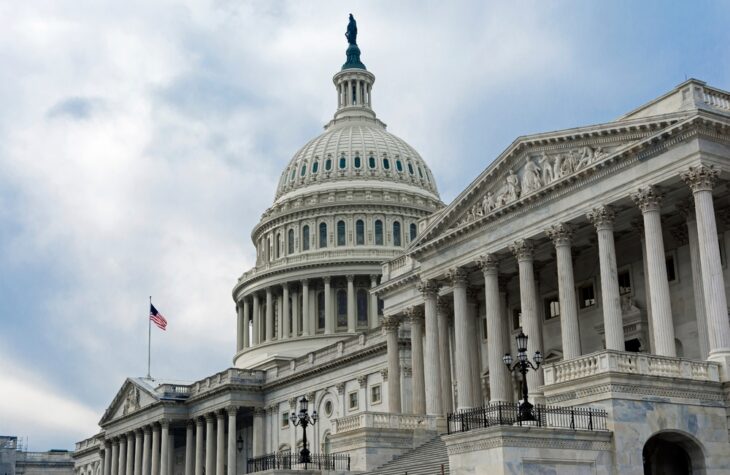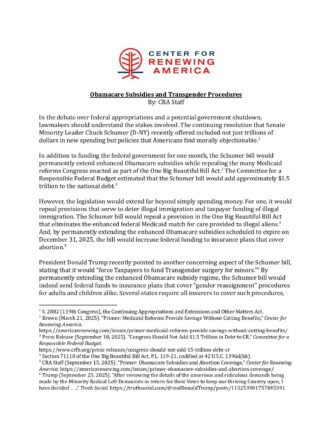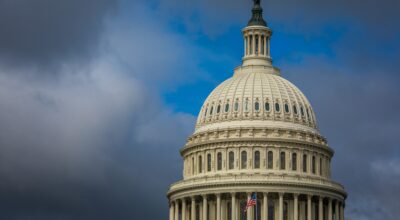
Obamacare Subsidies and Transgender Procedures
In the debate over federal appropriations and a potential government shutdown, lawmakers should understand the stakes involved. The continuing resolution that Senate Minority Leader Chuck Schumer (D-NY) recently offered included not just trillions of dollars in new spending but policies that Americans find morally objectionable.1
In addition to funding the federal government for one month, the Schumer bill would permanently extend enhanced Obamacare subsidies while repealing the many Medicaid reforms Congress enacted as part of the One Big Beautiful Bill Act.2 The Committee for a Responsible Federal Budget estimated that the Schumer bill would add approximately $1.5 trillion to the national debt.3
However, the legislation would extend far beyond simply spending money. For one, it would repeal provisions that serve to deter illegal immigration and taxpayer funding of illegal immigration. The Schumer bill would repeal a provision in the One Big Beautiful Bill Act that eliminates the enhanced federal Medicaid match for care provided to illegal aliens.4 And, by permanently extending the enhanced Obamacare subsidies scheduled to expire on December 31, 2025, the bill would increase federal funding to insurance plans that cover abortion.5
President Donald Trump recently pointed to another concerning aspect of the Schumer bill, stating that it would “force Taxpayers to fund Transgender surgery for minors.”6 By permanently extending the enhanced Obamacare subsidy regime, the Schumer bill would indeed send federal funds to insurance plans that cover “gender reassignment” procedures for adults and children alike. Several states require all insurers to cover such procedures, meaning that the taxpayer funds included in the Schumer bill would subsidize plans covering them. California also recently implemented legislation requiring medical providers and insurers to engage in “cultural competency training” designed and promoted by the transgender community—a form of indoctrination that violates First Amendment rights, yet is funded in part by federal subsidy dollars.
While the Trump administration has taken executive action to limit the coverage of procedures many Americans find morally objectionable and offensive, those actions are under legal threat from the transgender community. Moreover, as with Obamacare and abortion coverage, executive action has its limits. Therefore, unless and until Congress takes action explicitly to delink Obamacare plans and so-called “gender-affirming care,” taxpayer funds will continue to flow to these insurance policies, meaning vast swaths of the American people may not support an extension of the enhanced subsidies.
State Insurance Coverage of Transgender Care
Insurance coverage of transgender procedures varies by state, and in some cases by insurer. In a review of Obamacare exchange plans, the activist group Out2Enroll claims that, as of 2025, nearly half of silver plans—the plans that determine the size of Obamacare premium subsidies in a given area—offer “affirmative coverage” of transgender treatments, with other insurance plans offering either some or broad exclusions, no coverage, or not making information available.7 According to the activist group, the 48.9 percent of 2,138 plans examined offering affirmative coverage in 2025 represents a growth in such coverage; only 9.9 percent of 866 plans examined offered such coverage in 2017.8
According to the Movement Advancement Project, twenty-four states and the District of Columbia prohibit transgender exclusions in health insurance coverage.9 These policies, enacted largely in blue states and primarily by administrative fiat, prohibit exclusions of coverage based on sexual orientation and/or “gender identity”—such that, for instance, an insurer that covers mastectomy as a breast cancer treatment must do so as part of so-called “gender-affirming care.”10
Of those twenty-four states, a total of five—California, Colorado, New Mexico, Vermont, and Washington state—explicitly include sex-trait modification procedures as an essential health benefit (EHB) in their benchmark health plan.11 Forty state EHB benchmark plans explicitly exclude sex-trait modification procedures, and the remaining six state benchmark plans are silent on the issue.12
Inclusion of a treatment as an essential health benefit is important for several reasons related to federal funding. First, Obamacare links coverage required by insurers—including annual and lifetime limits on coverage and an annual limit on beneficiary cost sharing—to the essential health benefits.13 Including transgender procedures in the essential benefits builds the cost of these procedures into premiums, which federal subsidies offset for most exchange enrollees.
Second, including transgender procedures in essential health benefits allows states to shift the costs associated with the new insurance requirements onto the federal government. Obamacare requires states to defray the marginal premium increases associated with additional benefit mandates—a mechanism created to prevent states from adding myriad new coverage requirements, which would raise premium costs and thus federal subsidy spending.14 But benefit mandates included in the state’s EHB benchmark plan are exempt from this requirement—a loophole that several states have exploited to maximize federal coverage of transgender procedures.15
Several states advertise the availability of transgender care and procedures in taxpayer-subsidized insurance coverage:
- California’s Department of Managed Health Care, which shares jurisdiction over health plans with the state’s Department of Insurance, has a webpage noting that plans regulated by either department “are required by California law to provide health plan enrollees who identify as transgender, gender diverse, or intersex (TGI) with medically necessary gender affirming care” and includes a list of medical and surgical interventions insurance plans cover.16
- Colorado’s Division of Insurance has a webpage noting that “in 2023, Colorado became the first state in the country to explicitly include gender-affirming care services in its benchmark health insurance plan for essential health benefits.”17 The page also includes detailed spreadsheets specifying coverage of specified genital and nongenital surgical procedures, hormones, and other procedures (e.g., electrolysis hair removal) by insurer. Nothing on the Division’s website indicates that these procedures are reserved for adults aged 18 and up, suggesting that minor children qualify for genital surgery and other permanent sterilization procedures funded by federal taxpayers.18
- Washington state’s exchange has a webpage about “preserving Washington Healthplanfinder access for gender-diverse people” that indicates federal regulatory changes (discussed further below) “do not change Washington state law or requirements; gender-affirming care remains covered by qualified health plans.”19 The page also cites the section of state law whereby “medically necessary gender-affirming care cannot be denied or limited.”20
Because these states include transgender “care” in their essential health benefits, federal taxpayers are subsidizing these procedures.
Federal Taxpayer Dollars Forcing Violations of Federal Law
Beyond using federal taxpayer dollars to subsidize procedures that many Americans find morally objectionable and offensive, a California law that recently went into effect indoctrinates medical professionals into transgender ideology. This measure undermines the First Amendment and violates federal conscience protections—and does so using federal taxpayer dollars in the form of Obamacare insurance subsidies.
The measure, enacted in September 2022 with an effective date of March 1, 2025, requires continuing medical education courses and all health plans to engage in “cultural competency training.”21 Among other provisions, the law prescribes that such competency training shall include
- Information about the effects, including, but not limited to, ongoing personal effects, of historical and contemporary exclusion and oppression of TGI communities.
- Information about communicating more effectively across gender identities, including TGI-inclusive terminology, using people’s correct names and pronouns, even when they are not reflected in records or legal documents; avoiding language, whether verbal or nonverbal, that demeans, ridicules, or condemns TGI individuals; and avoiding making assumptions about gender identity by using gender-neutral language and avoiding language that presumes all individuals are heterosexual, cisgender or gender conforming, or nonintersex.
- Discussion on health inequities within the TGI community, including family and community acceptance.
- Perspectives of diverse, local constituency groups and TGI-serving organizations, including, but not limited to, the California Transgender Advisory Council.
- Recognition of the difference between personal values and professional responsibilities with regard to serving TGI people.
- Facilitation by TGI-serving organizations.22
This law mandates that medical training bodies and health plans engage in forced speech, and it requires physicians and insurance company employees to ascribe to the mandate in a clear violation of their First Amendment rights. Further, the bill codifies violation of the Hippocratic oath to “do no harm” by indoctrinating medical providers into inflicting mutilation, castration, and bodily harm on patients in the name of “gender-affirming care.”
In addition, the California bill’s focus on “the difference between personal values and professional responsibilities with regard to serving TGI people” likely violates federal conscience protections. Specifically, the Church Amendments, codified in the 1970s, include a series of protections relating to sterilization procedures—a term that encompasses many forms of so-called “gender-affirming care.”23 In general, the amendments
- prohibit public officials receiving certain federal assistance from requiring an entity or individual from participating in an abortion or sterilization procedure;
- prohibit certain recipients of federal assistance from discriminating in the employment or privileges of health care personnel because they declined to participate in an abortion or sterilization procedure, or because of their religious or moral views regarding same;
- protect individuals from being required to participate in a part of any federally funded program or research activity to which they have moral or religious objections; and
- prohibit certain federal grant recipients from discriminating against students or applicants based on those individuals’ religious or moral objections to participating in abortions or sterilizations.24
The California law’s focus on “the difference between personal values and professional responsibilities” regarding transgender “care” implies that medical professionals should be forced into participating in “gender-affirming” sterilization procedures, notwithstanding any religious or moral objections they may hold—a likely violation of federal conscience protections.
Moreover, the indoctrination regime required by the new California statute is funded by federal insurance subsidy dollars. A Department of Managed Health Care memorandum noted that, in addition to the requirements spelled out in statute, “cultural competency training” regarding transgender care must also “examine the lasting impact of historical and contemporary exclusion, microaggressions, and oppression on TGI communities and TGI individuals and health outcomes.”25 In addition to being divisive—pitting groups against each other in a Marxist battle of “oppressor” and “oppressed”—the cost of complying with these bureaucratic requirements gets incorporated into plan premiums, which are funded by federal taxpayers.
Trump Administration Rule
In June, the Trump administration acted to address the issue of federal subsidies funding transgender procedures. As part of a larger rule implementing a series of program integrity measures, the Department of Health and Human Services (HHS) removed specified sex-trait modification procedures as an essential health benefit, beginning with the 2026 plan year.26 HHS defined “specified sex-trait modification procedures” as:
any pharmaceutical or surgical intervention that is provided for the purpose of attempting to align an individual’s physical appearance or body with an asserted identity that differs from the individual’s sex either by 1) intentionally disrupting or suppressing the normal development of natural biological functions, including primary or secondary sex-based traits; or 2) intentionally altering an individual’s physical appearance or body, including amputating, minimizing, or destroying primary or secondary sex-based traits such as the sexual and reproductive organs.27
This definition excludes “procedures undertaken 1) to treat a person with a medically identifiable disorder of sexual development, or 2) for purposes other than attempting to align an individual’s physical appearance or body with an asserted identity that differs from the individual’s sex.”28 It also excludes mental health treatment for patients suffering from so-called gender dysphoria.
HHS justified the change “because the scope of EHB must be equal in scope to the benefits provided under a typical employer plan, and coverage of sex-trait modification is not typically included in employer-sponsored plans.”29 For instance, HHS noted that forty-two states link their essential health benefits benchmark plans to small group coverage, and many small group plans do not cover these services.30 The department also cited a database that “encompasses the majority of health insurance enrollees covered outside of large group plans” and found that about 0.11 percent of enrollees accessed these services in 2022 and 2023.31
Under the rule, insurers may still cover sex-trait modification procedures in their plans on a voluntary basis. However, because Obamacare links its various coverage requirements to the essential health benefits, coverage of these treatments would not be subject to the law’s prohibition on annual or lifetime coverage limits or the annual limit on enrollee out-of-pocket cost sharing.32 EHB costs are subsidized in the premiums, and the premiums are then subsidized by the taxpayer.
With respect to the premium associated with transgender procedures, “the portion of the premium attributable to specified sex-trait modification procedures would not be eligible” for federal subsidies, “and the enrollee would be responsible for the cost of any associated premium and cost sharing.”33 However, if a state requires insurers to cover the procedures, notwithstanding the federal prohibition on including those procedures as part of the essential health benefit, “the state would bear the cost of the portion of premium attributable to these procedures, though the enrollee would still be responsible for any applicable cost sharing.”34
Therefore, even after the final rule takes effect next year, two facts will remain true regarding taxpayer funding of transgender procedures:
1. Because money is fungible, federal taxpayers will continue to subsidize insurance plans that cover transgender and child mutilation procedures.
2. If states like California continue to mandate coverage of transgender procedures, taxpayers will continue to directly subsidize the premium cost of those procedures; however, the subsidies will now come from the taxpayers of the relevant state rather than the federal government.
Both of these facts suggest the need for a legislative solution, which would ensure that neither federal nor state taxpayers are forced to cover plans or procedures that a growing number of Americans find morally objectionable and offensive.
Limits of Executive Action
Given this dynamic, and the inherent limitations of the rule the Trump administration promulgated within months of taking office, administrative action is necessary, but likely not sufficient, to prevent taxpayer dollars from being used to fund morally objectionable procedures. There are several reasons for this:
Legal Challenges: The rule has come under legal challenge on multiple fronts. Federal litigation over nondiscrimination rules and their relationship to so-called “gender identity” has persisted for nearly a decade. So while the final rule removing transgender procedures from essential health benefits provides taxpayers with some protections, the unsettled legal environment surrounding the “gender identity” issue suggests that a legislative solution would provide more certainty.
Change in Administration: Any regulatory action is by definition subject to reversal by a new administration. Given how the Obama and Biden administrations sought to appease progressive activists by redefining biology, it seems likely, if not certain, that a future administration will act to undo the Trump administration’s restrictions if federal courts do not do so before then.
Indeed, one can easily envision a scenario wherein a future leftist administration requires all states to include transgender care as an essential health benefit—which would ensure that federal taxpayers, as well as exchange policyholders in all fifty states, fund sterilization and castration procedures. However, requiring coverage of transgender care would align with the leftist view that Section 1557 prohibits individuals from being “excluded from participation in . . . denied the benefits of, or . . . subject to discrimination under, any health program or activity” on the basis of “gender identity.”35
Fungibility: Since the debate on Obamacare in 2009 and 2010, the pro-life movement has consistently recognized that money is fungible. To wit, any subsidies that make health insurance plans that cover abortion more affordable by definition also make abortion more affordable. This simple premise demonstrates how the purported “segregation” mechanism Democrats included in Obamacare does not prevent federal taxpayer dollars from subsidizing plans that cover abortion.36 That exact premise applies to transgender procedures: Irrespective of regulatory actions the Trump administration has taken to minimize the damage of current law and policy, federal dollars continue to flow to plans covering child mutilation and castration.
In a recent letter regarding Obamacare subsidies and abortion coverage, a coalition of pro-life groups called administrative action necessary but not sufficient: “The Trump policy . . . maximized enforcement of Section 1303 [the “segregation” mechanism] which was all that could be done under the law. However, if Congress makes changes to [Obamacare] or extends [Obamacare] coverage, the changes must include complete application of Hyde policy” preventing taxpayer funds from flowing to plans that cover abortion.37
The same principle should apply here—namely, that federal funds should not flow to insurance plans covering genital mutilation and chemical castration procedures, just as they should not flow to plans covering abortion. If individuals wish to purchase coverage for transgender procedures and/or abortion, they can buy a separate policy covering just those procedures. That premise was embodied in the amendment offered by Rep. Bart Stupak (D-MI) in November 2009 regarding abortion coverage. That amendment passed the House with broad bipartisan support before Senate Democratic leadership stripped the amendment from the bill in the lead-up to Obamacare’s enactment.38
Conclusion
Federal funds should not flow to plans covering abortion, nor should they go to insurance policies that fund child mutilation and chemical castration. The growing amount of evidence showing physical harms from these untested procedures, the increasing propensity for mental instability due to “gender-affirming” care, coupled with the significant number of Americans with religious, moral, or medical concerns about them, all suggest that taxpayer dollars should not cover these types of radical procedures, nor the indoctrination regime that states like California have created to generate support for them.
At a minimum, lawmakers should prevent this problem from becoming worse by declining to extend the enhanced subsidies that expire on December 31, 2025. After that date, Congress should work with the Trump administration to enact clear protections on taxpayer funding of plans that cover transgender procedures—policies that will protect taxpayers and American children in equal measure.
Endnotes
1. S. 2882 (119th Congress), the Continuing Appropriations and Extensions and Other Matters Act.
2. Brown (March 21, 2025). “Primer: Medicaid Reforms Provide Savings Without Cutting Benefits,” Center for Renewing America. https://americarenewing.com/issues/primer-medicaid-reforms-provide-savings-without-cutting-benefits/
3. Press Release (September 18, 2025). “Congress Should Not Add $1.5 Trillion in Debt to CR,” Committee for a Responsible Federal Budget. https://www.crfb.org/press-releases/congress-should-not-add-15-trillion-debt-cr
4. Section 71110 of the One Big Beautiful Bill Act, P.L. 119-21, codified at 42 U.S.C. 1396d(kk).
5. CRA Staff (September 15, 2025). “Primer: Obamacare Subsidies and Abortion Coverage,” Center for Renewing America. https://americarenewing.com/issues/primer-obamacare-subsidies-and-abortion-coverage/
6. Trump (September 23, 2025). “After reviewing the details of the unserious and ridiculous demands being made by the Minority Radical Left Democrats in return for their Votes to keep our thriving Country open, I have decided . . .,” Truth Social. https://truthsocial.com/@realDonaldTrump/posts/115253901757845391
7. Out2Enroll (accessed September 29, 2025). “Summary of Findings: Report on Trans Exclusions in 2025 Marketplace Plans,” https://www.out2enroll.org/publications, p. 4
8. Ibid.
9. Movement Advancement Project (June 3, 2025). “Health Care Laws and Policies: Private Insurance Non-Discrimination Laws, Bans on Exclusions of Transgender Health Care, and Related Policies.” https://www.mapresearch.org/img/maps/citations-nondisc-insurance.pdf
10. Ibid.
11. Cited in Department of Health and Human Services, Final Rule regarding “Patient Protection and Affordable Care Act: Marketplace Integrity and Affordability,” Federal Register, June 25, 2025, https://www.govinfo.gov/content/pkg/FR-2025-06-25/pdf/2025-11606.pdf, p. 27154, footnote 196
12. Ibid.
13. Sections 1001 and 1302 of the Patient Protection and Affordable Care Act (PPACA), P.L. 111-48, codified at 42 U.S.C. 300gg-11(b) and 42 U.S.C. 18022, respectively.
14. Section 1311(d)(3) of PPACA, codified at 42 U.S.C. 13031(d)(3).
15. 45 C.F.R. 155.170(a)(2). Section 1302 of PPACA initially envisioned the Department of Health and Human Services as determining the essential health benefits nationwide. However, the Obama administration delegated this authority to each state to determine a “benchmark” plan for purposes of defining EHBs, a practice that succeeding administrations have continued. See Department of Health and Human Services, Final Rule regarding “Patient Protection and Affordable Care Act: Standards Related to Essential Health Benefits, Actuarial Value, and Accreditation,” Federal Register, February 25, 2013, https://www.govinfo.gov/content/pkg/FR-2013-02-25/pdf/2013-04084.pdf.
16. California Department of Managed Health Care (accessed September 29, 2025). “Transgender, Gender Diverse, or Intersex Care,” https://www.dmhc.ca.gov/HealthCareinCalifornia/GettheBestCare/TGICare.aspx
17. Colorado Division of Insurance (accessed September 29, 2025). “Gender-Affirming Care Coverage Guide,” https://doi.colorado.gov/for-consumers/consumer-resources/special-insurance-topics/lgbtq-health-care-rights/gender-affirming
18. Ibid.
19. Washington Health Benefit Exchange (accessed September 29, 2025). “Preserving Washington Healthplanfinder Access for Gender-Diverse People,” https://www.wahbexchange.org/about-the-exchange/initiatives/access-for-gender-diverse-people/
20. Ibid. See also RCW 48.43.0128.
21. S. 923, Chapter 822. Full text available at https://leginfo.legislature.ca.gov/faces/billNavClient.xhtml?bill_id=202120220SB923
22. Ibid.
23. 42 U.S.C. 300a-7.
24. Department of Health and Human Services (reviewed September 4, 2025). “Your Protections Against Discrimination Based on Conscience and Religion,” https://www.hhs.gov/conscience/your-protections-against-discrimination-based-on-conscience-and-religion/index.html
25. California Department of Managed Health Care (August 15, 2024). “Compliance with Senate Bill 923,” All Plan Letter 24-018, https://www.dmhc.ca.gov/Portals/0/Docs/OPL/APL24-018-CompliancewithSB923(8_15_24).pdf, p. 8
26. Department of Health and Human Services, Marketplace Integrity Final Rule.
27. Ibid., p. 27154.
28. Ibid.
29. Ibid., p. 27152.
30. Ibid., p. 27153.
31. Ibid.
32. Ibid., p. 27161.
33. Ibid.
34. Ibid. See also 42 U.S.C. 13031(d)(3) and 45 C.F.R. 155.170, regarding states defraying the cost of additional state-mandated benefits.
35. Section 1557 of PPACA, codified at 42 U.S.C. 18116(a).
36. Section 1303 of PPACA, codified at 42 U.S.C. 18023. For more information, see CRA Staff, “Primer: Obamacare Subsidies and Abortion Coverage.”
37. Susan B. Anthony Pro-Life America et al., Letter to Members of Congress (September 3, 2025). Susan B. Anthony Pro-Life America et al. https://s3.amazonaws.com/pub-attachments/15db750c-dbdd-4b7b-806f-b5129a6b22ae.pdf
38. House Amendment 509 to H.R. 3962 (111th Congress); House Roll Call Vote 884 of 2009, November 7, 2009, https://clerk.house.gov/Votes/2009884.




